Virginia might be famous for its role in American history and Washington D.C.’s backyard, but as someone who’s spent countless weekends exploring the state, I can tell you there’s so much more than just Colonial Williamsburg and Mount Vernon. While these spots are worth visiting, the real magic happens when you venture beyond the typical tourist stops.
From the rolling hills of the Shenandoah Valley to the quiet beaches of the Eastern Shore, Virginia packs an incredible range of experiences into its borders. Whether you’re looking for small mountain towns, hidden waterfalls, or peaceful coastal getaways, the state offers endless possibilities for weekend adventures. Here are 19 of my favorite weekend destinations in Virginia that’ll help you see the state in a whole new light.
- Best historic sites: Colonial Williamsburg
- Best mountain getaway: Shenandoah Valley
- Best beach spot: Virginia Beach
- Best for families: Busch Gardens
- Best small town charm: Abingdon
- Best outdoor adventure: Natural Bridge
Shenandoah National Park
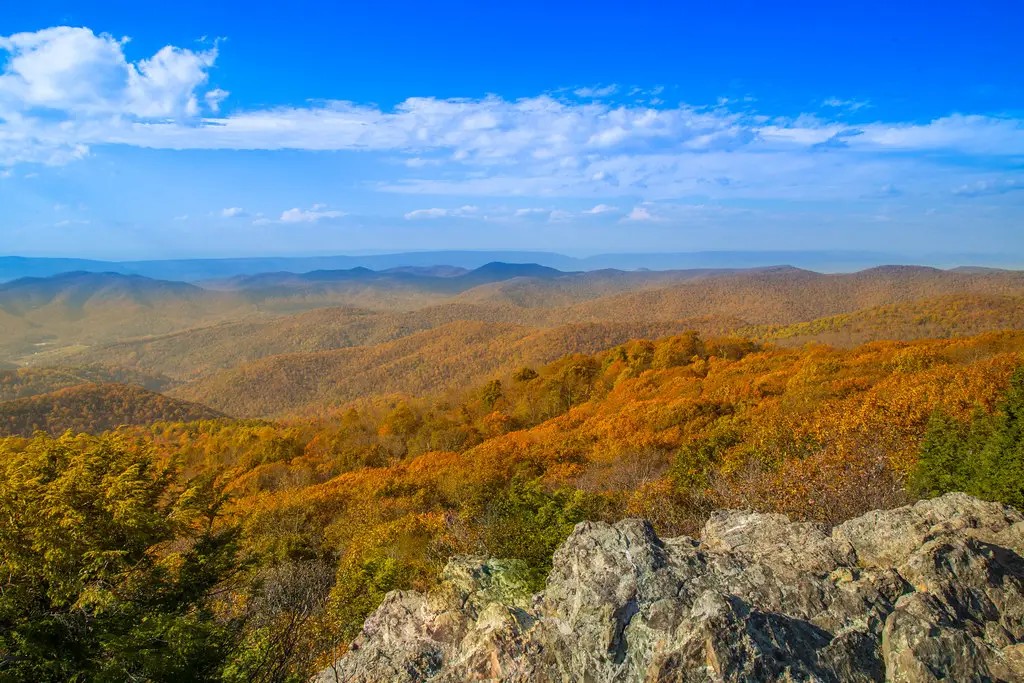
I first visited Shenandoah National Park on a crisp autumn weekend in 2018. Stretching across Virginia’s Blue Ridge Mountains for 105 miles, the park weaves through dense forests and rolling hillsides along the famous Skyline Drive. Small mountain towns and rustic lodges dot the landscape, while hiking trails like the popular Old Rag Mountain path lead visitors through quiet woods and past rocky overlooks. The park’s Skyland Resort, perched at the highest point on Skyline Drive, offers rooms with sweeping views that make you feel like you’re floating above the Shenandoah Valley, especially when morning fog rolls through the mountains below.
Virginia Beach
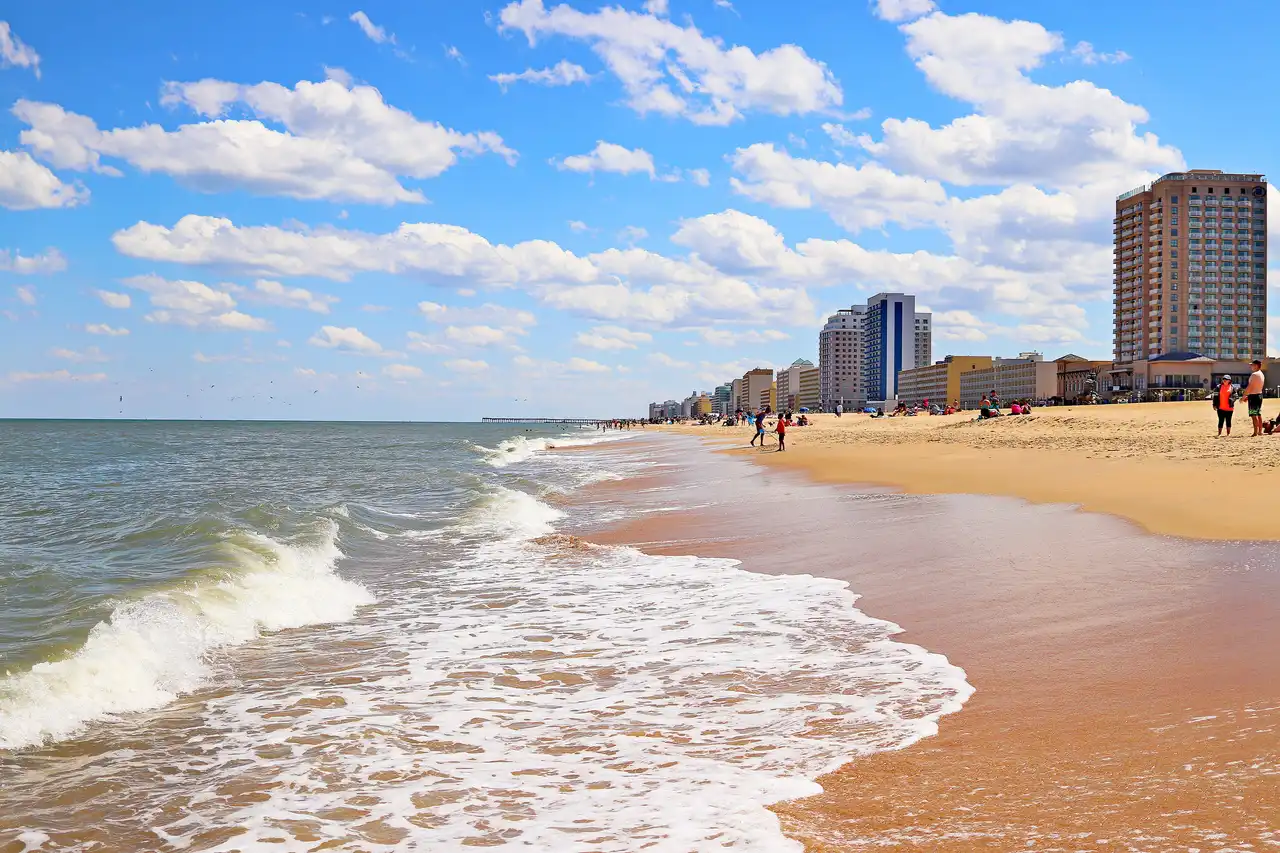
Virginia Beach holds a special place in my heart since my first visit back in 2015. Sitting at the southeastern corner of Virginia where the Chesapeake Bay meets the Atlantic Ocean, this coastal city combines laid-back beach vibes with urban amenities. The three-mile boardwalk serves as the heartbeat of the oceanfront, lined with restaurants, shops, and the occasional street performer. Beyond the beach scene, First Landing State Park offers 2,888 acres of cypress swamps and maritime forest, while the Virginia Aquarium showcases the region’s marine life through its 800,000-gallon displays. The city really comes alive at sunset when locals and visitors gather at Neptune’s Park for live music, or head to Rudee Inlet to watch fishing boats return with their daily catch.
Colonial Williamsburg
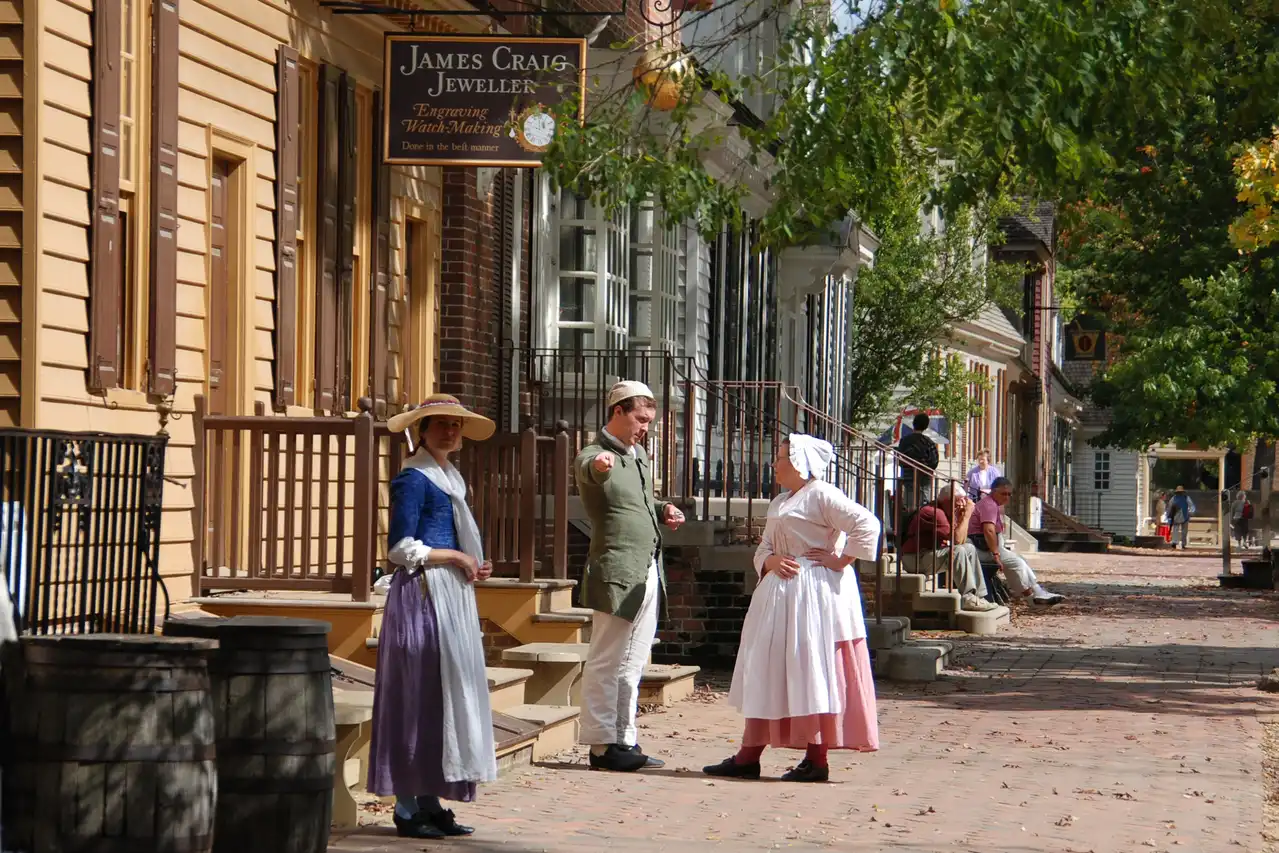
Step back in time when you visit Colonial Williamsburg, America’s largest living history museum. The 300-acre historic district lets you experience life in the 1700s, complete with costumed interpreters who bring the past to life through demonstrations and storytelling. You can explore more than 40 historic buildings and sites, including the Governor’s Palace and Capitol building, or try your hand at traditional crafts like blacksmithing and weaving. For an extra special experience, book a stay at one of the official Colonial Houses, where you’ll sleep in restored 18th-century accommodations with modern comforts.
Richmond
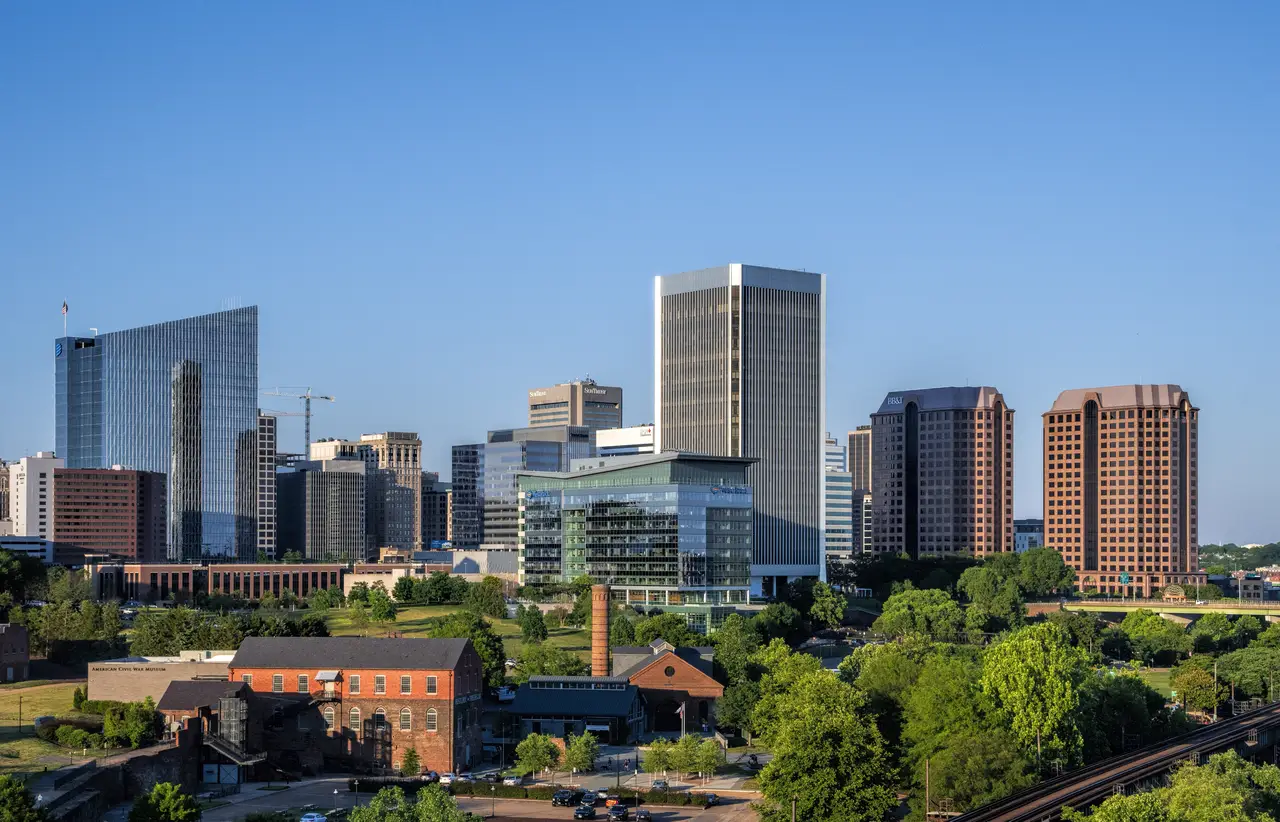
Step into Virginia’s capital city, where history and modern culture blend together in Richmond’s charming streets. Start your weekend at the Virginia Museum of Fine Arts, which offers free admission to its world-class collections seven days a week. Take a stroll through Carytown, where local shops and restaurants line the streets, then head to the James River for kayaking or a relaxing afternoon at Belle Isle. Food lovers should make their way to the Church Hill neighborhood, home to some of the city’s best restaurants and bakeries. For a dose of history, visit the Virginia State Capitol building, designed by Thomas Jefferson himself, or explore the American Civil War Museum to understand the city’s significant role in shaping our nation’s past.
Charlottesville
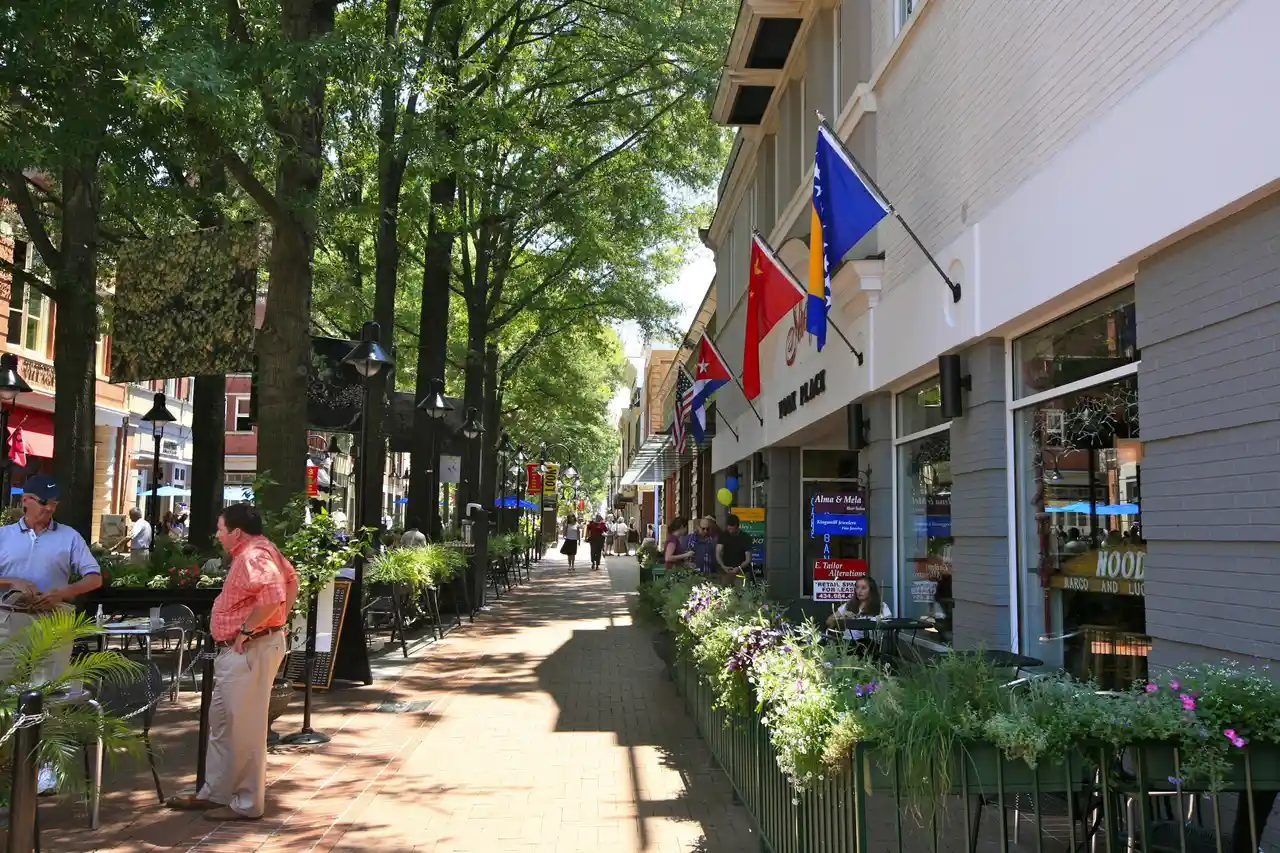
I always tell first-time visitors to Charlottesville to explore the historic Downtown Mall. Located in the heart of the city, this brick-paved pedestrian area stretches eight blocks and features over 120 shops, restaurants, and entertainment venues. Between catching a show at the Paramount Theater, dining at local farm-to-table restaurants, and browsing independent bookstores, you’ll also be just minutes away from Thomas Jefferson’s Monticello and the University of Virginia’s iconic grounds.
Luray Caverns
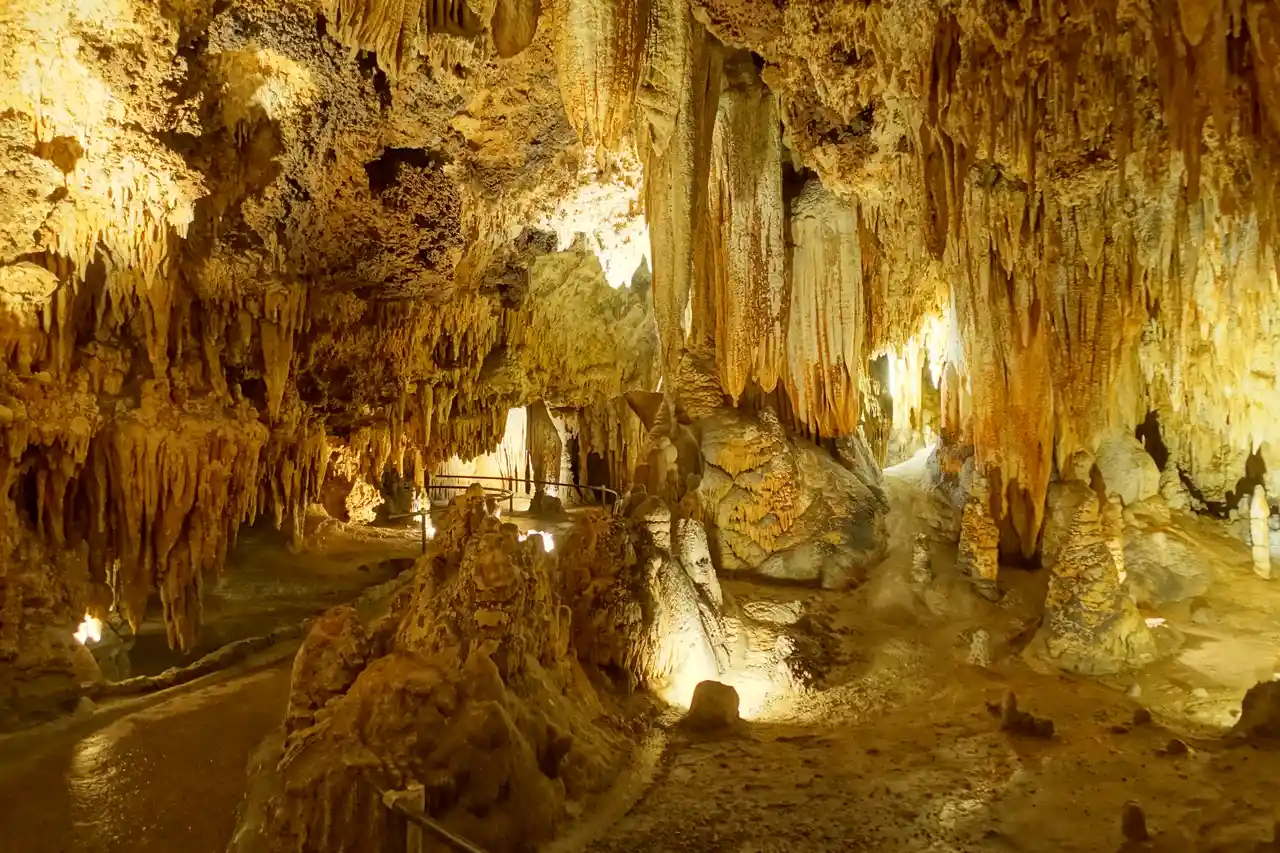
Just an hour west of Washington D.C., Luray Caverns sits beneath the rolling hills of the Shenandoah Valley. The largest cave system in the eastern United States, these limestone caverns were discovered in 1878 and have been drawing visitors underground ever since. The natural rock formations create an other-worldly scene, with towering stalactites hanging from above and crystal-clear pools reflecting their mirror images below. The caverns’ most famous feature, the Great Stalacpipe Organ, uses the ancient formations themselves as musical instruments, filling the chambers with haunting melodies. Above ground, the property includes a vintage car museum, garden maze, and rope adventure course, making it an ideal day trip for families looking to mix natural wonders with a bit of old-fashioned fun.
Roanoke
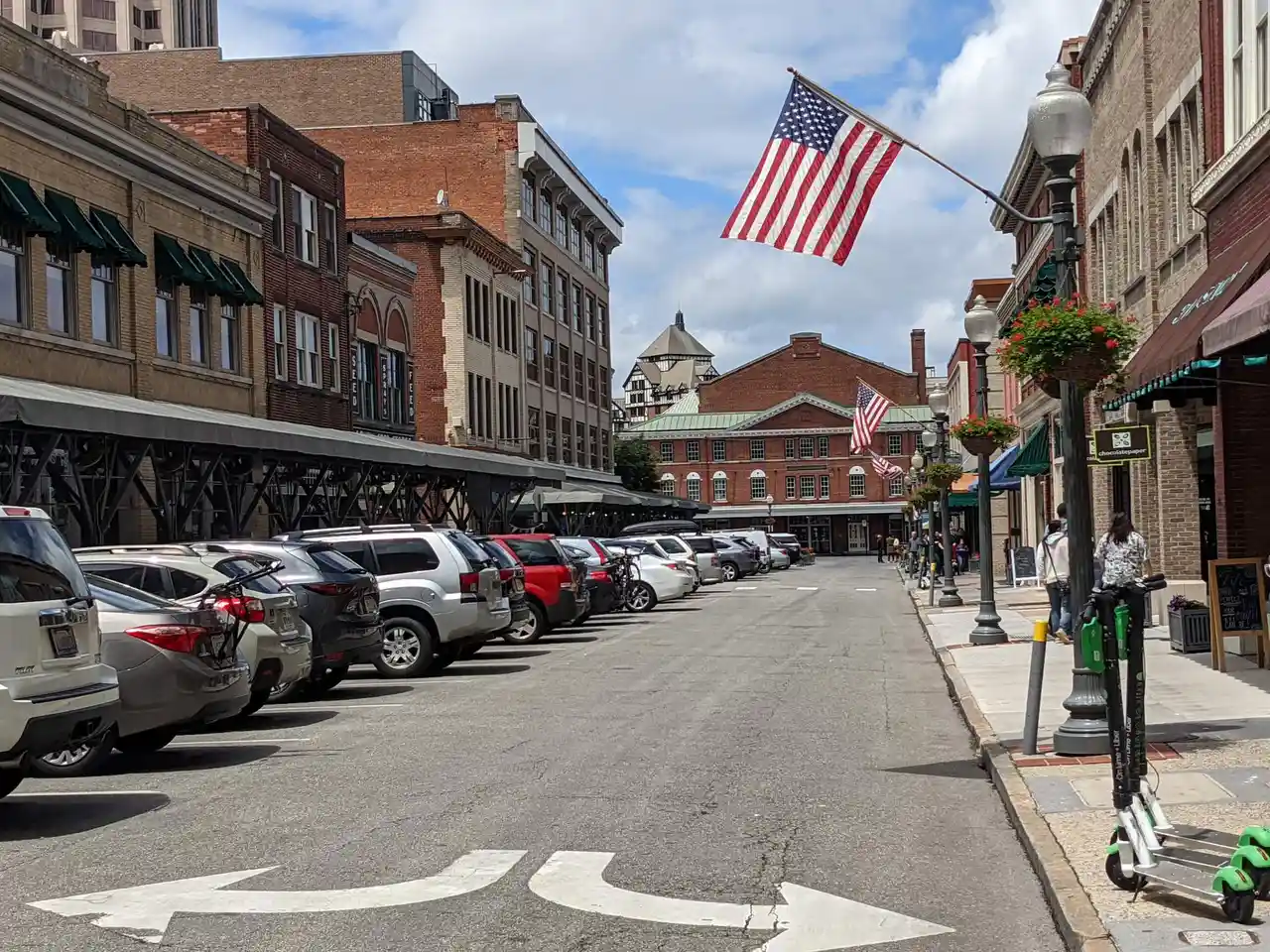
Looking for a dose of small-city charm mixed with mountain adventures? That’s exactly what you’ll find in Roanoke, nestled in Virginia’s Blue Ridge Mountains. The city’s famous illuminated star on Mill Mountain has been watching over downtown since 1949, where you can wander through the historic farmers market or grab a locally-brewed beer at one of the craft breweries. Just outside town, the Blue Ridge Parkway offers endless hiking and biking trails, while the nearby McAfee Knob – one of the most photographed spots on the Appalachian Trail – rewards hikers with sweeping views of the valley. The Virginia Museum of Transportation downtown tells the story of Roanoke’s rich railroad heritage, complete with vintage locomotives that kids and train enthusiasts love to explore.
Alexandria
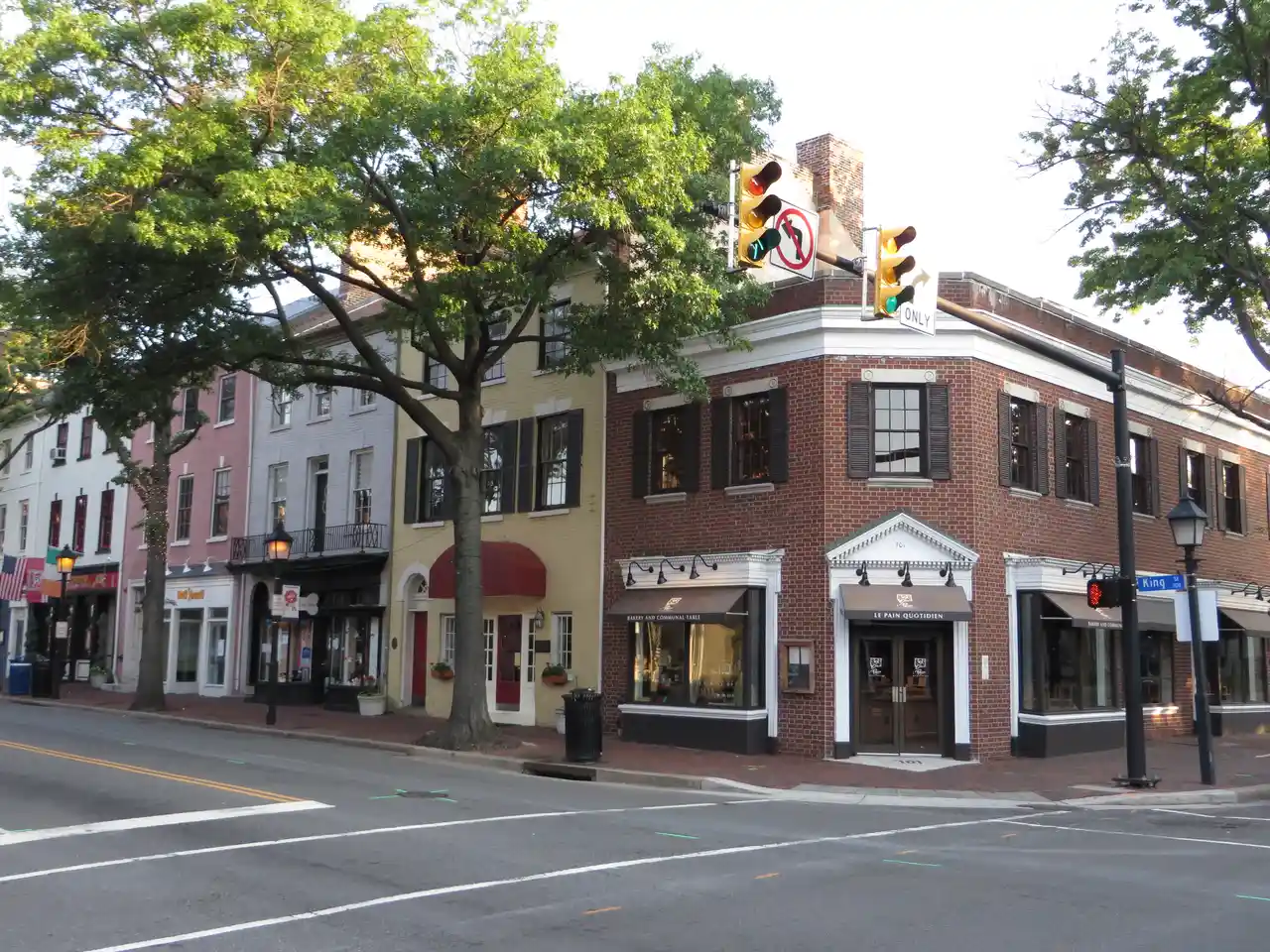
Just 20 minutes south of Washington D.C. sits the historic city of Alexandria. Like many colonial-era towns, Alexandria has its collection of brick buildings, cobblestone streets, and waterfront views. But unlike other East Coast cities, it manages to blend its 18th-century charm with a modern, laid-back vibe. Take a stroll down King Street, where local boutiques and family-owned restaurants occupy buildings that once housed America’s founding fathers, and you’ll see what I mean. Because of Alexandria’s role in early American commerce, many wealthy merchants built their homes here, and you’ll find well-preserved townhouses and colonial architecture lining the streets of Old Town.
Norfolk

Norfolk is one of my top recommendations for anyone exploring Virginia. Located where the Elizabeth River meets the Chesapeake Bay, this waterfront city offers a perfect mix of maritime history and modern attractions. At Nauticus, you can step aboard the massive USS Wisconsin battleship, while the Virginia Zoo and Norfolk Botanical Garden provide peaceful escapes within the city limits. The downtown waterfront comes alive with restaurants, shops, and the popular Town Point Park, where locals gather for festivals and outdoor concerts throughout the year.
Mount Vernon
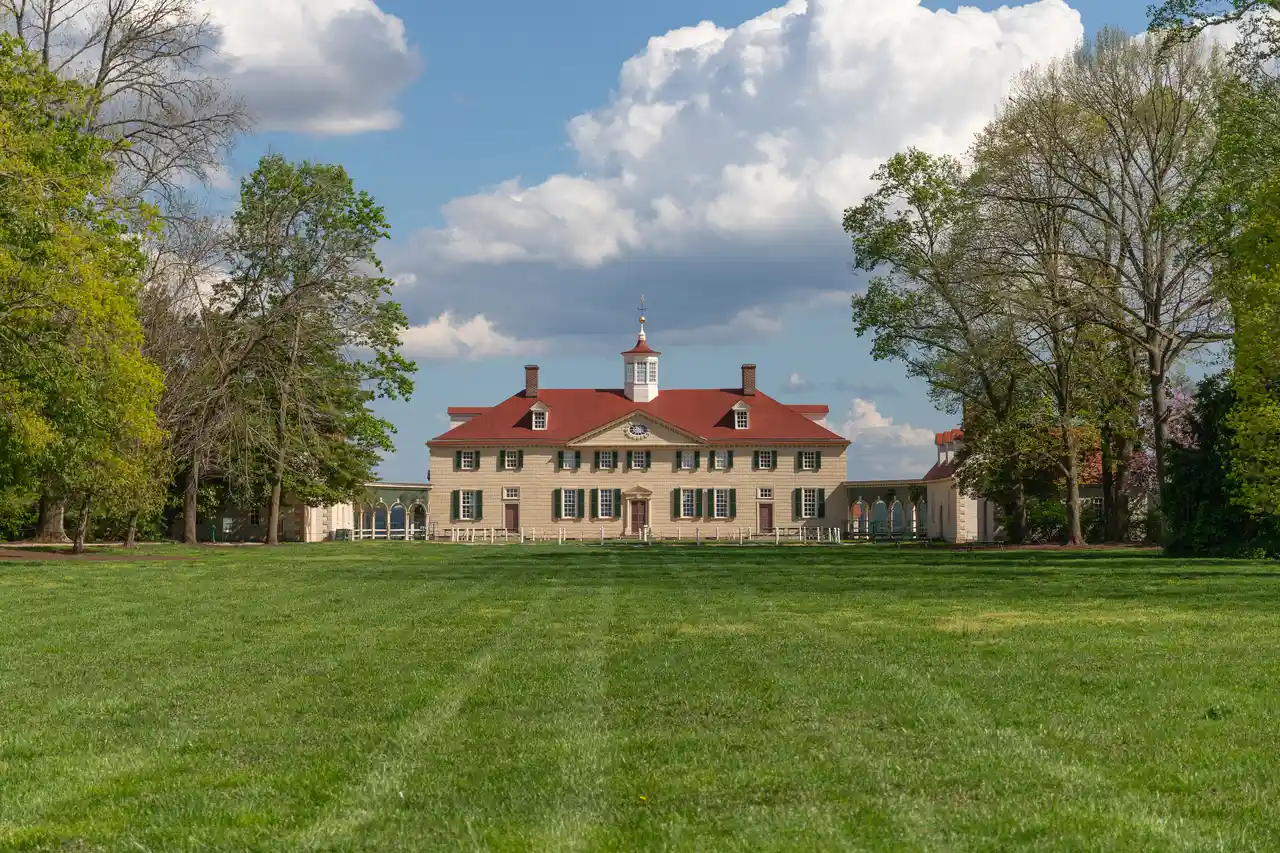
Of all the historic sites I’ve explored in Virginia, none feel quite as special as Mount Vernon, George Washington’s beloved home. This sprawling 18th-century estate along the Potomac River brings American history to life through its carefully preserved mansion, working farm, and extensive grounds that Washington himself walked. It’s more than just a house museum – visitors can wander through the first president’s gardens, peek into his distillery, and get a real sense of life in colonial America. The experience isn’t complete without taking in the river views from Washington’s back porch, the same peaceful scene he enjoyed while contemplating the future of a young nation.
Natural Bridge State Park
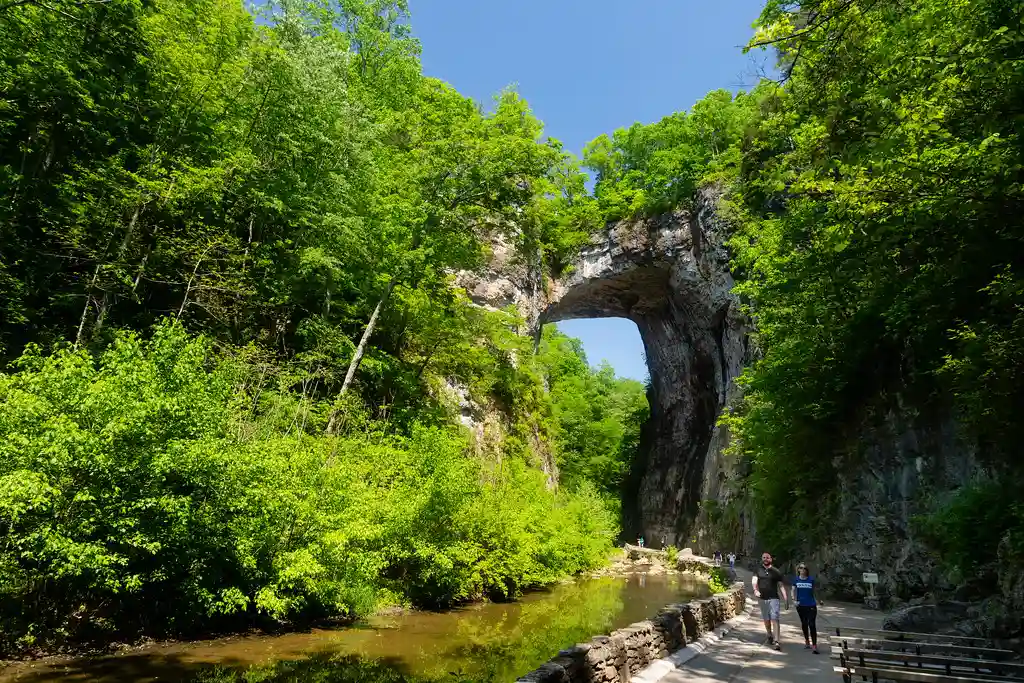
Experience one of Virginia’s most impressive natural wonders at Natural Bridge State Park, where a massive limestone arch towers 215 feet above Cedar Creek. This unique geological formation, carved by water over thousands of years, serves as the centerpiece of a 1,500-acre park filled with hiking trails and cultural history. Take the Cedar Creek Trail to walk beneath the enormous stone bridge, then explore the park’s Native American village exhibit and saltpeter cave. For the best experience, visit during sunset when the daily “Drama of Creation” light show illuminates the bridge with music and narration, telling the story of this remarkable landmark.
Winchester
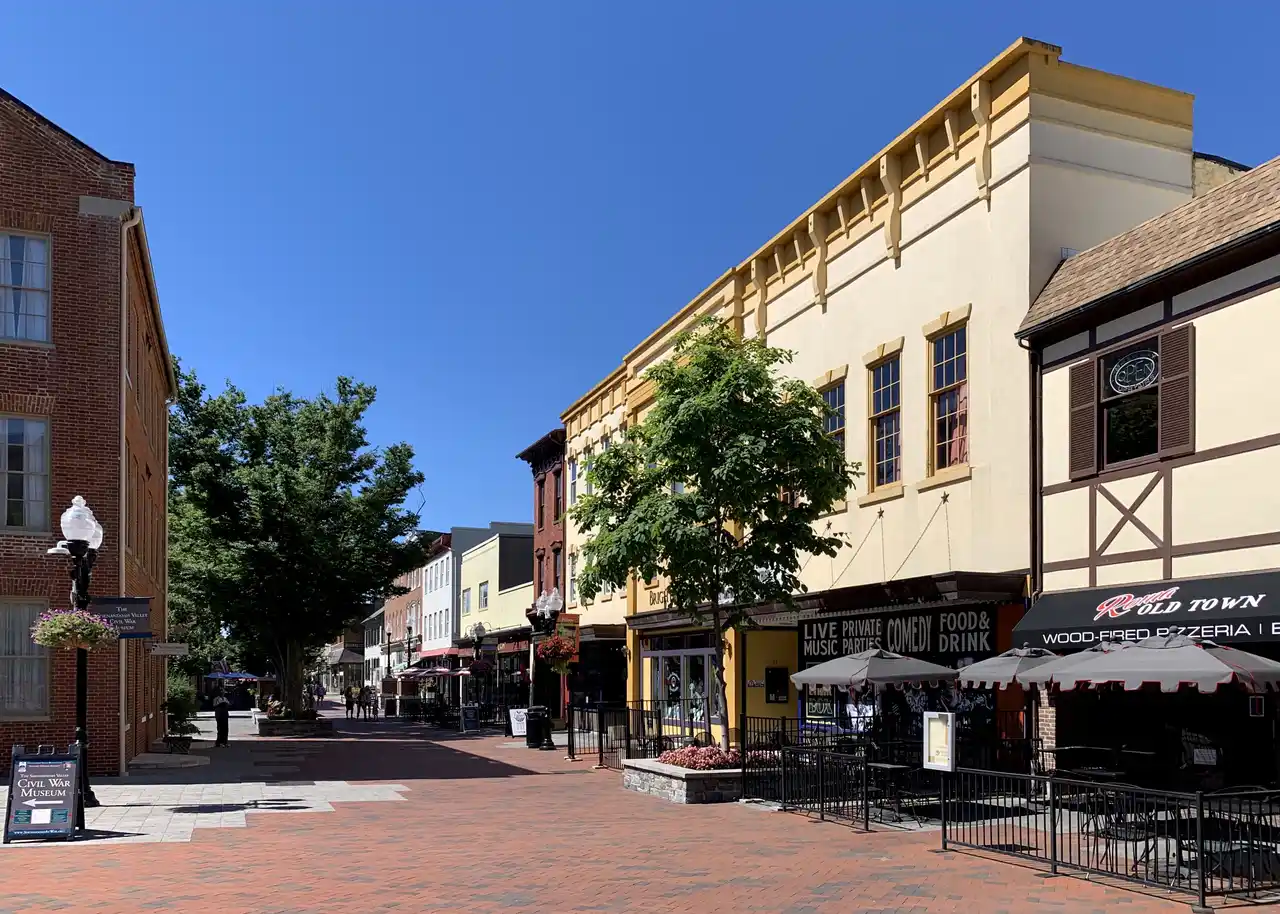
Have you ever walked down streets where George Washington himself once strolled? You’ll find that and more in Winchester, a charming town tucked into Virginia’s Shenandoah Valley, just 75 miles from Washington DC. The gateway to the sprawling Apple Blossom festival each spring, this is one of the best places in Virginia to experience Civil War history and small-town charm year-round. You can explore the fascinating Stonewall Jackson’s Headquarters Museum, wander through the historic Old Town Walking Mall lined with local shops and cafes, and taste your way through the region’s apple orchards, which have been producing fruit since colonial times.
Chincoteague Island
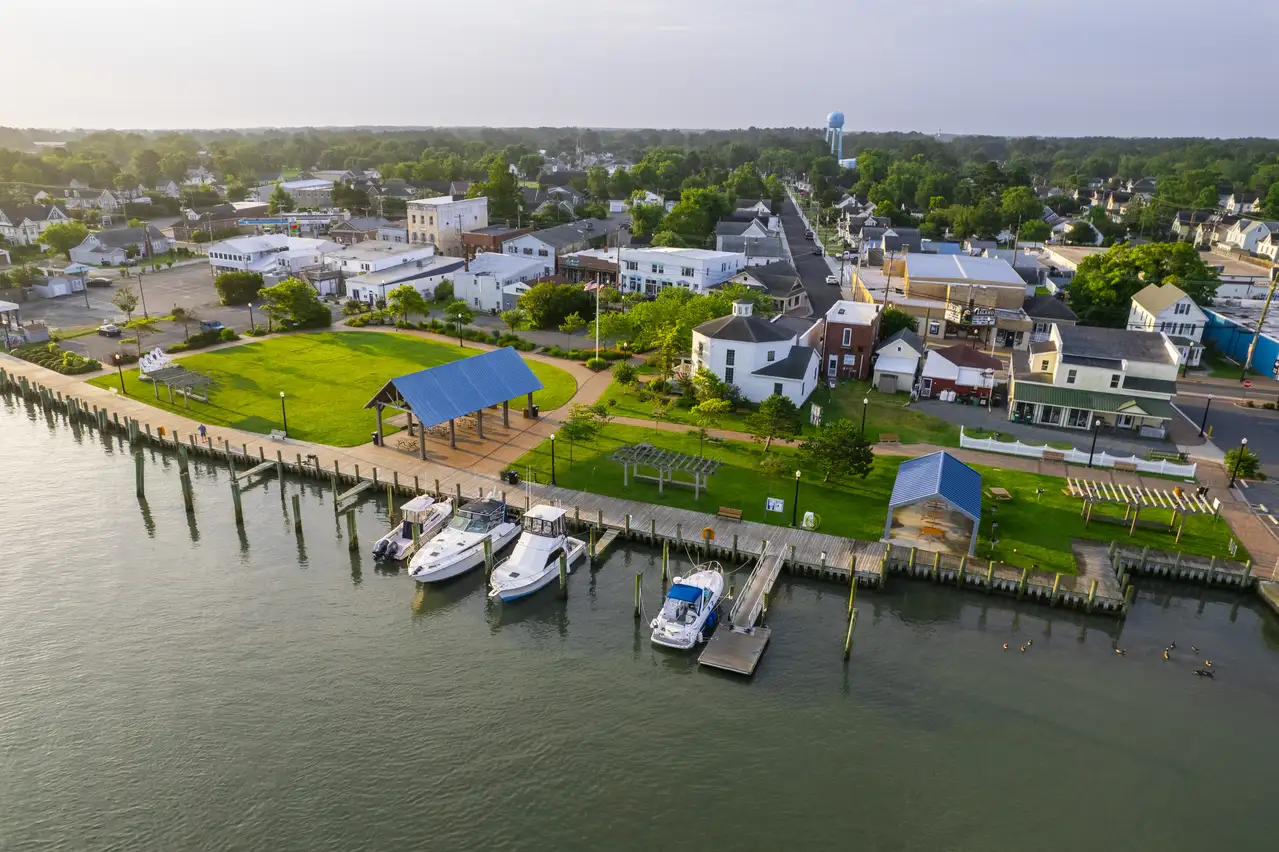
Have you ever seen wild ponies galloping along a pristine shoreline? It’s a regular occurrence on Chincoteague Island, a charming coastal retreat off Virginia’s Eastern Shore where salt marshes meet the Atlantic Ocean. This laid-back barrier island is famous for its annual Pony Swim, when local “saltwater cowboys” round up the wild Chincoteague ponies and guide them across the channel. Beyond the equine attractions, you can spend your days kayaking through winding waterways, climbing the historic lighthouse at the Chincoteague National Wildlife Refuge, or sampling just-caught seafood at family-owned restaurants along Main Street.
Staunton
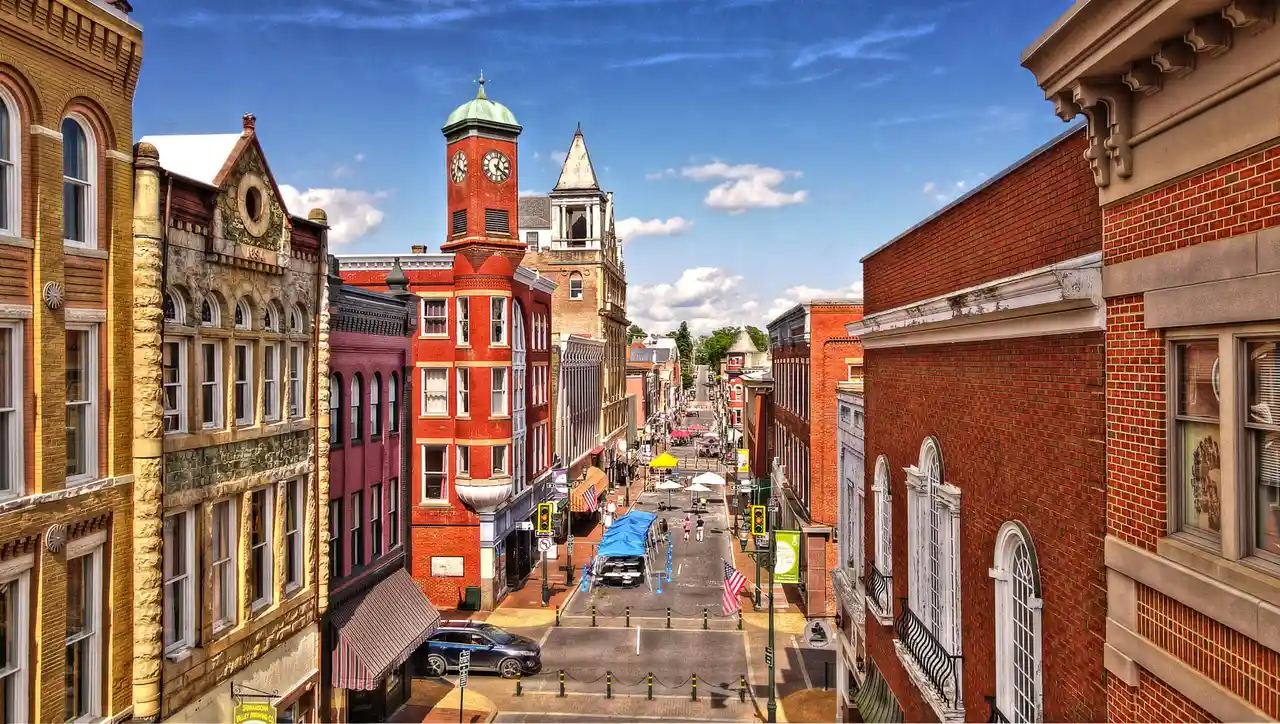
Take a step back in time when you visit Staunton, a small town with deep roots in American history. The city’s downtown features well-preserved Victorian architecture and the world’s only recreation of Shakespeare’s Blackfriars Playhouse, where you can catch performances year-round. Food lovers will enjoy the local restaurants along Beverly Street, many of which serve farm-to-table dishes using ingredients from the Shenandoah Valley. For a dose of presidential history, check out the Woodrow Wilson Presidential Library and Museum, where you can tour the 28th president’s birthplace and learn about life in the Victorian era.
Virginia Wine Country
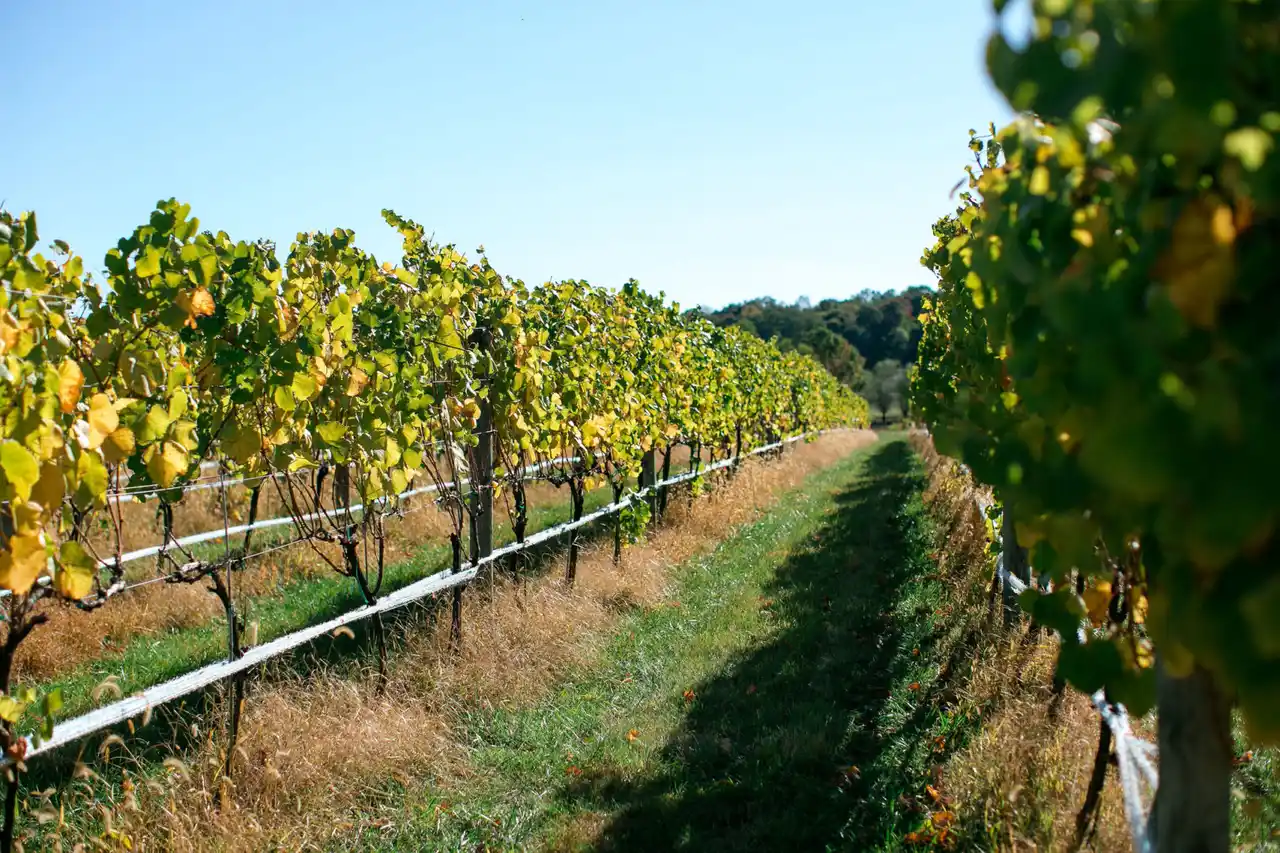
Ever tasted a glass of Petit Verdot while gazing over rolling hills covered in grapevines? That’s a typical afternoon in Virginia Wine Country, where more than 300 wineries dot the landscape from the Blue Ridge Mountains to the coastal plains. Just a short drive from Washington D.C., this wine lover’s paradise lets you hop between family-owned vineyards, each offering their own take on Virginia’s signature Viognier and Cabernet Franc. You can join a guided tour through the cellars, learn about wine-making from local vintners, or simply relax on a sunny terrace with a cheese plate and a flight of reds. The Monticello Wine Trail, inspired by Thomas Jefferson’s vision of American wine-making, is home to over 40 wineries clustered around Charlottesville.
Virginia Beach Boardwalk
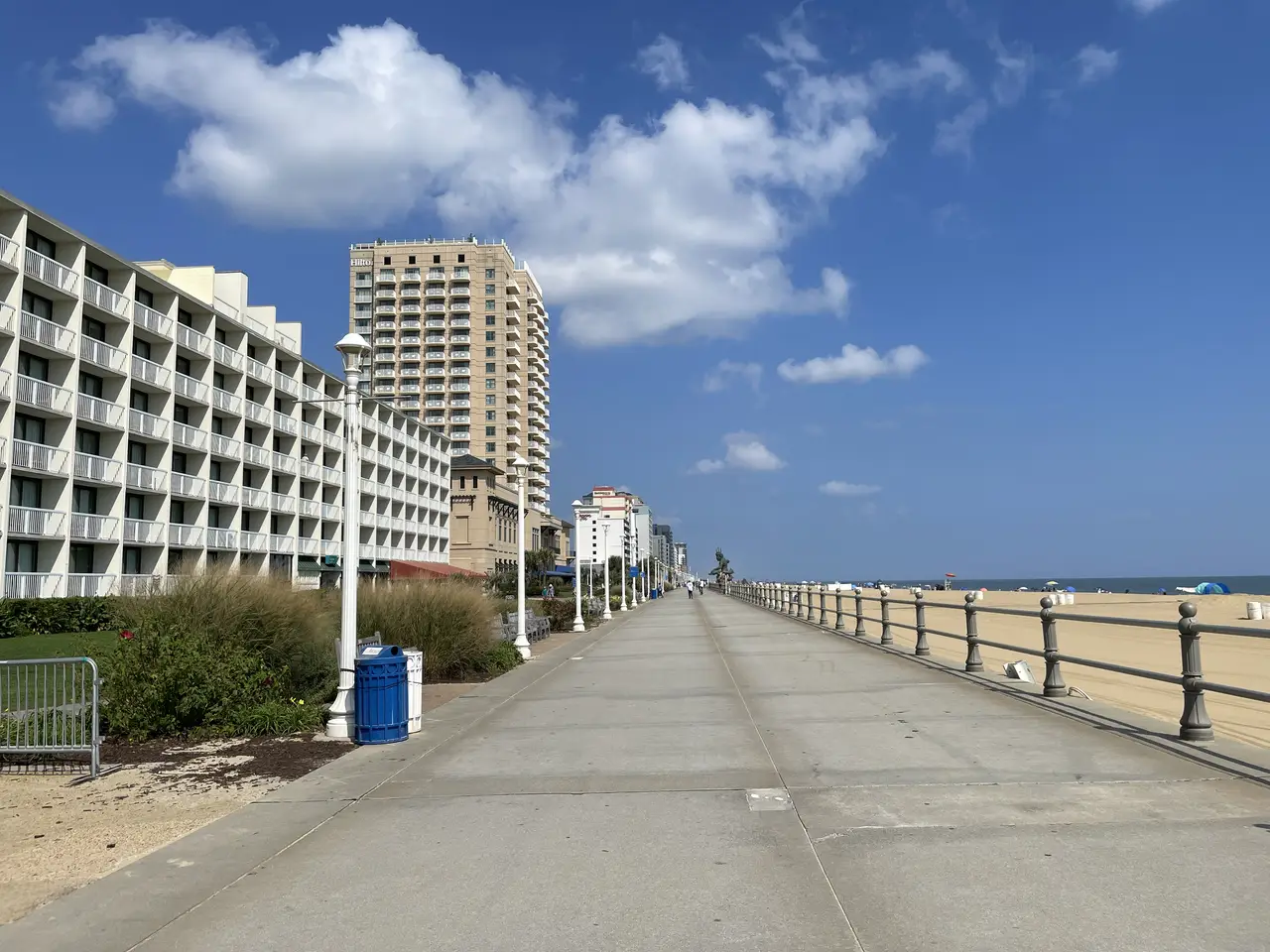
One of my favorite places to visit in Virginia is the three-mile Virginia Beach Boardwalk, stretching along the Atlantic coastline. This concrete path runs parallel to the sandy shores, offering a perfect blend of beach life and urban amenities. Local restaurants and shops line the western side, while the eastern edge gives way to the endless ocean views. Street performers and musicians add life to the scene, especially during summer evenings when the boardwalk comes alive with families strolling, cyclists cruising by, and friends gathering at outdoor cafes. The King Neptune statue stands as an iconic 34-foot bronze landmark at 31st Street, making it a popular spot for photos and meetups. Whether you’re craving fresh seafood, wanting to rent a bike, or simply yearning to feel the ocean breeze, the boardwalk serves as the heart of Virginia Beach’s coastal experience.
Old Town Alexandria
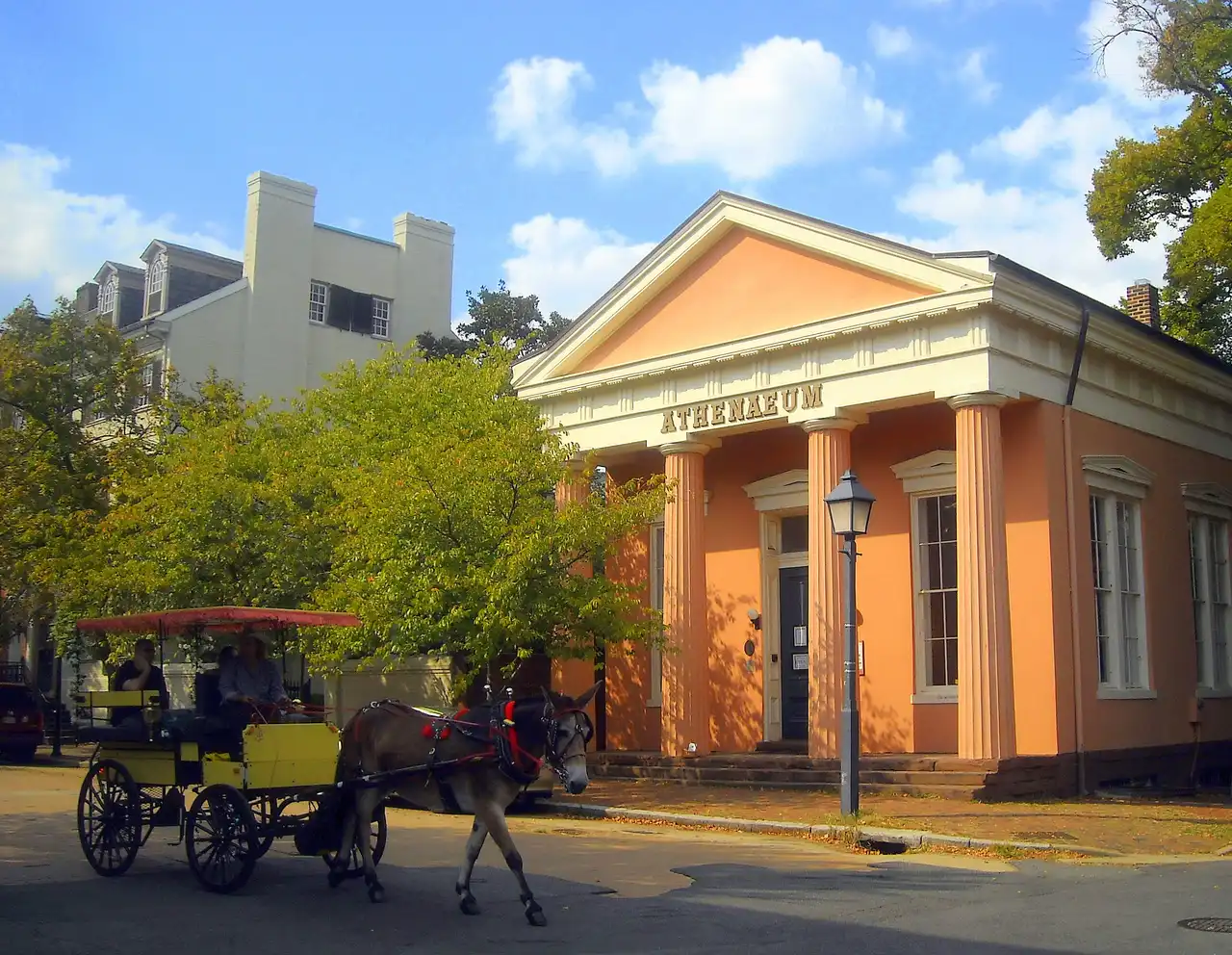
Just a short drive from Washington DC, Old Town Alexandria feels like stepping into a different era. This historic district charms visitors with its red brick sidewalks and well-preserved 18th-century buildings that line King Street, the main thoroughfare running down to the Potomac River waterfront. Like many locals, I spend weekends here wandering through independent boutiques and popping into cozy restaurants housed in former colonial homes. It’s not just about the architecture though – the weekly farmers market at Market Square has been running since 1753, making it one of the nation’s oldest continuously operating markets. The laid-back vibe and walkable streets make it perfect for a relaxed weekend of exploring American history while enjoying modern cafes and shops.
Blue Ridge Mountains
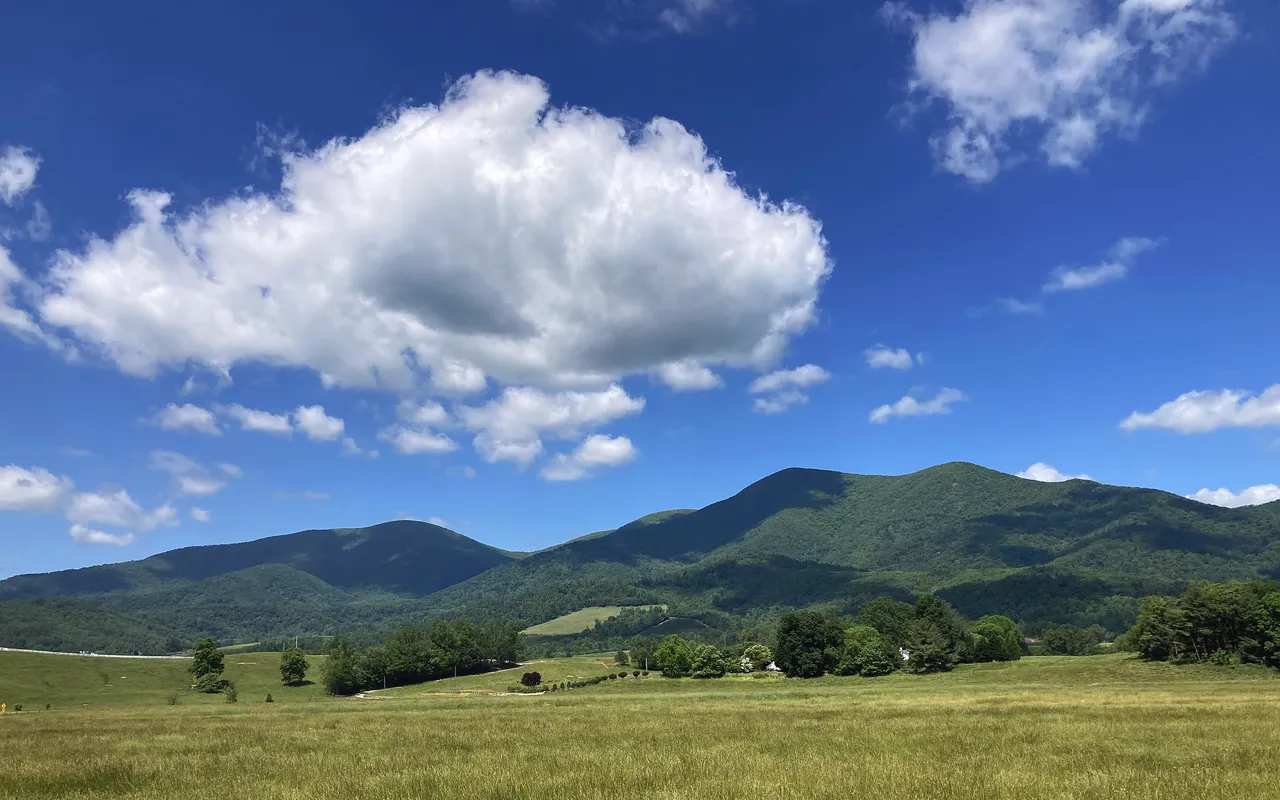
The Blue Ridge Mountains hold a special place in Virginia’s outdoor scene. This mountain range stretches for hundreds of miles through the western part of the state, offering some of the most scenic drives and hiking trails you’ll find on the East Coast. The famous Skyline Drive winds along the mountain ridges for 105 miles, letting you hop between overlooks, trailheads, and picnic spots with ease. While many visitors come just for the fall colors, I’ve found that each season brings its own charm – from spring wildflowers to summer fireflies to winter’s snow-dusted peaks. It’s not just about the views though – the small mountain towns dotted throughout the range give you plenty of chances to grab local apple cider, chat with friendly locals, and discover hidden waterfalls off the beaten path.
Jamestown Settlement
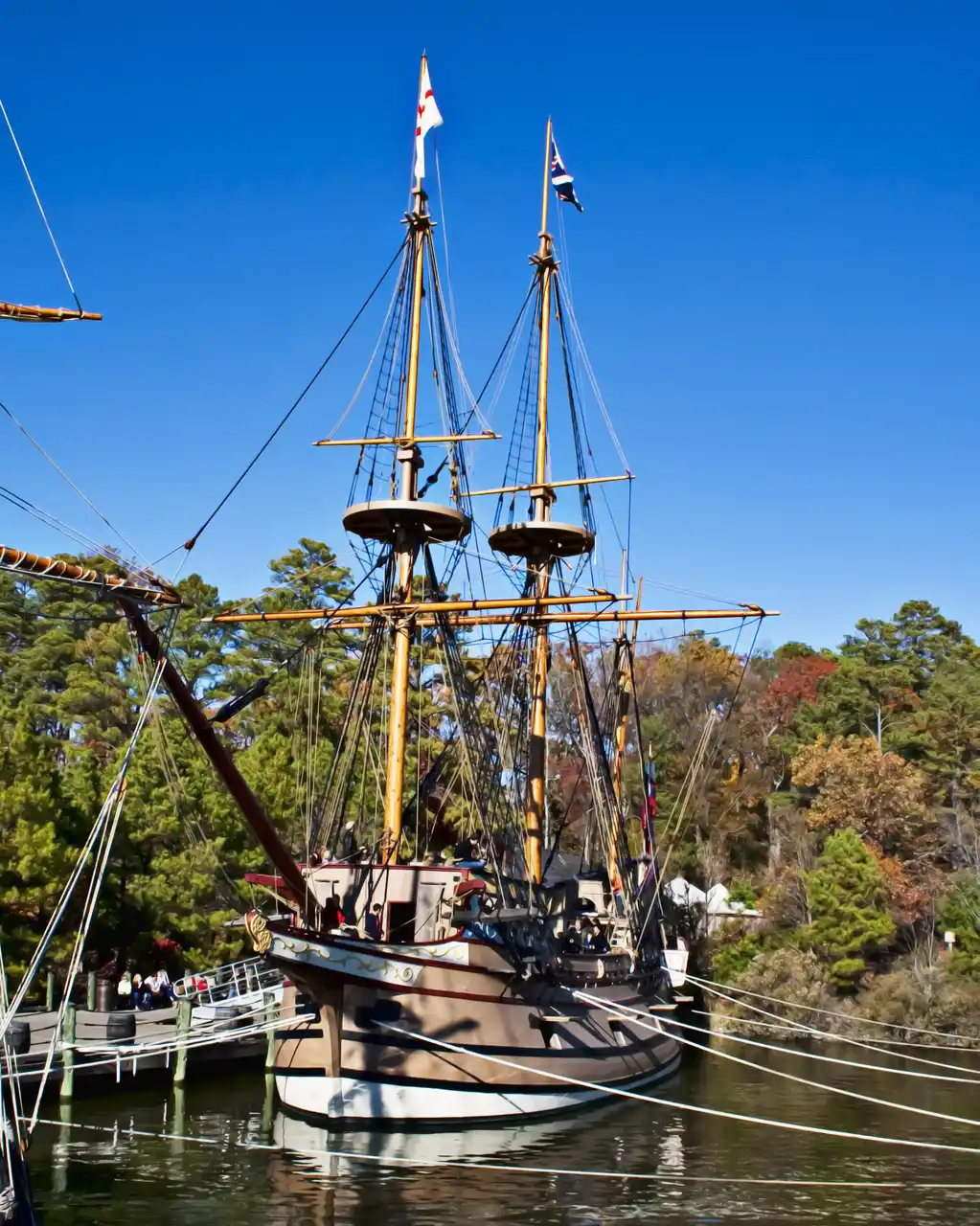
My first visit to Jamestown Settlement was back in 2019, and it remains one of Virginia’s most fascinating historical sites. Located along the James River, this living history museum brings the story of America’s first permanent English colony to life. The settlement features detailed recreations of the original 1610s fort, a Powhatan Indian village, and full-scale replicas of the three ships that sailed from England to Virginia in 1607. Walking through the settlement, you’ll find costumed interpreters demonstrating daily colonial activities like blacksmithing and cooking, while the museum houses an impressive collection of artifacts that tell the complex story of early colonial America, from the arrival of English settlers to their interactions with Native Americans and the first Africans who arrived in 1619.

